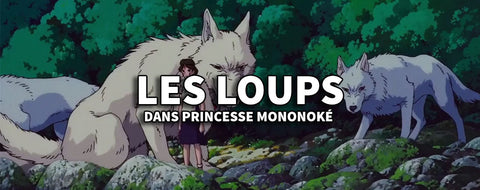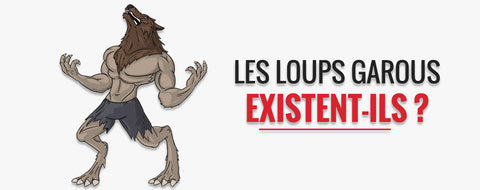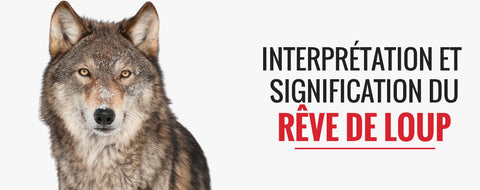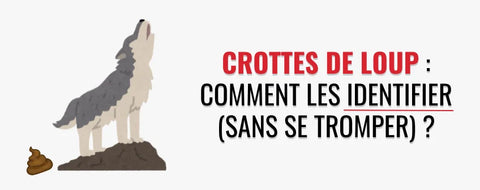
Wolf droppings: how to easily recognize them and avoid confusion?
of reading - words
Finding droppings in the woods isn't exactly glamorous. Yet, it's one of the most valuable clues you can use to detect the presence of a wolf . You might think that looking at the size or shape is enough, but in reality, it's much more complicated . Even experts get it wrong.
Why? How can you tell them apart from a dog or a fox? Is it really useful to know?
We answer all that, and more. In plain language, without the fluff.
💩 Why would you want to identify a wolf dropping?
A key indicator of the presence of wolves in a region
No GPS collar, no beacon , often not even a visible trace. The wolf moves far, fast, and rarely under human eyes. So we track . And among all the clues, droppings remain one of the most accessible .
It gives a direct clue about the wolf's recent passage through the area. Sometimes a few hours, sometimes a few days.
When you're lucky enough to come across a fresh one, you know the wolf isn't far away . It's a bit like a business card... the wild version.
Personally, I spotted one in the heart of the Mercantour region, lying prominently on a rock. Inside? Deer hair and a tiny bone. There was no doubt about it: it wasn't a hiking dog. And yet, without DNA analysis, it's impossible to be 100% sure.
A valuable method for scientists and enthusiasts
For biologists, every dropping is a gold mine . It contains:
- DNA , to identify the individual or the pack
- food leftovers , to know his diet
- location data , to map movements
It's simple: without droppings, there's no reliable tracking . The OFB's "Loup Lynx" network, for example, relies heavily on these clues. And on the enthusiast side, many are looking for these traces like others look for mushrooms.
But be careful, even the best can make mistakes . One study found that experienced observers make nearly 42% errors when visually identifying droppings. This just goes to show that passion isn't enough. You have to be careful.
Data that influences population management
Misidentification can do more damage than you think.
Example: predation on sheep is overestimated because of misattributed droppings . Result: the figures explode, the wolf is wrongly accused , and tensions rise in the countryside.
A study showed that without genetic analysis, the consumption of domestic ungulates is overestimated by 18% . With DNA, the error drops to 14%. This changes everything for the decisions made afterwards, whether to protect or regulate.
In short: misreading a turd is misreading the wolf . And that can lead to completely off-base political or ecological choices .

🐺 Identifying wolf droppings: the visual criteria you need to know
Recognizing wolf droppings in the field is often a guessing game . We have some benchmarks, yes, but nothing is 100% reliable . Even experts make mistakes. However, certain elements can help us form an idea , especially if we cross-reference them with other clues such as footprints or howls.
Size, shape, color: the typical characteristics
A wolf's droppings look like those of a large dog . In general:
- Cylindrical shape , slightly conical at one end
- Diameter: between 2 and 3 cm
- Length: 10 to 15 cm
- Variable color , often dark brown, grayish or even greenish depending on the diet
They are often placed in a prominent place , on a path, a stone or in the center of a forest crossroads. This is a marking behavior, very common among canids. We have already seen them placed right in the middle of a path, as if the wolf wanted to mark its passage. And perhaps that is a bit like it.
The problem is that these criteria are not enough to differentiate between a dog and a fox . In a scientific test (Labadie et al., 2021), even experienced observers are wrong almost half the time. Conclusion: we must remain wary .
Contents: hair, bones, animal fragments
The contents are often more revealing than the exterior. A wolf dropping often contains:
- Hair : deer, roe deer, chamois, fox…
- Fragments of bones or hooves
- Sometimes plant remains , but rare
These elements reflect the wolf's highly carnivorous diet , centered on wild ungulates. But again, caution is advised. A raw-fed dog can produce identical droppings. And so can a fox nibbling on a fawn.
In the field, you can have fun taking a small stick to explore the material (gloves strongly recommended). If you find long, black or gray hairs mixed with bones , it's probably wild. But that's not proof.
Odor and appearance: telltale signs?
The smell is strong, pungent , and sometimes sickening. But it varies enormously depending on the diet. The droppings of a wolf fed on fresh meat do not smell like the droppings of a wolf during times of famine.
The outward appearance can also help. The droppings are often compact , very fibrous , with tapered ends. Sometimes they are segmented. A very grainy or crumbly texture can be a clue, especially if it is accompanied by visible hairs. But this is all very subjective .
What we noticed: The older the poop, the less identifiable it is . It turns gray, disintegrates, and loses its key clues .
Beware of confusion with dog, fox or lynx
This is the real trap. A lot of droppings that we think are wolf droppings are not .
- Dog poop : very similar. If the dog eats raw meat or hunts, the confusion is complete.
- Fox droppings : thinner, more twisted, often shorter. But in mountain areas, size can be deceptive .
- Lynx droppings : drier, more crumbly , often full of hair. They look more like giant cat droppings, but in the field, the distinction is complex.
We've already been fooled during a bivouac in the Bauges. A nice turd on a promontory, full of hair. We thought it was a wolf. Later analysis revealed... a sheepdog .
Conclusion: Only DNA can decide. In the meantime, we must cross-check the evidence , remain cautious, and not jump to conclusions. A modest observation is better than a false certainty.

Other signs of wolf presence to be crossed with droppings
Identifying a dropping is good. Cross-referencing it with other clues is better. By multiplying the signs, we limit errors. The wolf leaves marks, visible or audible, which form a coherent puzzle when we know how to read them.
Fingerprints: how to recognize them
Wolf prints resemble those of a large dog .
What helps:
- Size : 9 to 12 cm long, 7 to 9 cm wide
- Shape : more elongated , symmetrical , well-marked fingers
- Single track : absence of double stride , unlike the dog
- Straight gait : the wolf walks straight , clear track, not very winding
In snow or mud, it's easier. Once, in the Vercors, we followed a straight line of tracks for nearly a kilometer. A dog wanders, a wolf tracks. It's a real signature.
But nothing is guaranteed. A working dog on a lead line sometimes leaves a similar trail. The environment, the context, and the repetition of clues should guide the interpretation.
Howls: A distinctive nighttime cry
The wolf's howl carries far . It is used to communicate with the pack , mark territory or respond to provocation .
Scientists use the technique of "wolf howling" : you imitate a howl, the wolf responds. Simple, effective. Used during breeding periods, it allows you to hear the wolf cubs , which are more high-pitched, and to count the individuals .
We tested this one summer evening near the Col de Larche. A scream started... 15 seconds of silence... then a hoarse, deep response from the opposite slope . Shivers guaranteed.
The wolf howl is distinguished from the dog howl by its depth, its breadth, and its duration over time . It is less broken, more fluid. Those who have already heard it no longer confuse it.
Devoured Prey: A Style of Its Own
The wolf does not eat like a dog. It hunts in packs, exhausting its prey , bringing it down with a blow to the neck or throat , and then methodically dismembering it.
On a carcass, we often find:
- Sharp bites on the neck or flanks
- Skin turned inside out , sometimes torn off
- Little flesh remaining , clean extraction
- Absence of disordered chewing
Conversely, a dog leaves chaotic traces , does not finish its meal, does not eat in a group .
The OFB (French Office for Biodiversity) takes these signs of predation into account to establish a link between attacks and the presence of wolves. But only genetic analysis of hair, saliva, or droppings confirms the author's claim.
Traces and markings on the territory
The wolf marks its territory . Urine, scratches, well-placed droppings: it's a message to other wolves .
The markings are often:
- On rocks , logs , path intersections
- Accompanied by prints or attached hairs
- Repeated regularly in the same place
This marking allows the pack to locate itself, avoid conflicts , and defend its resources. During our outings, we noticed these marked spots several times during the season. The wolf is back. It manages its space.
Combining all these clues – droppings, footprints, howls, carcasses, markings – gives a complete picture , more reliable than any single sign. And that's what makes the wolf quest so exciting.
At Terre des Loups , this passion for the wolf is expressed through a wide range of products inspired by this majestic animal :
- Wolf Jewelry : Pendants , bracelets or rings engraved with wolf motifs, perfect for wearing their strength and mystery every day.
- Wolf Clothing : Sweatshirts , t- shirts and sweaters featuring captivating wolf designs to show off your passion.
- Wolf Decoration : Paintings , cushion covers or statues representing wild wolves , ideal for giving a unique touch to your interior.
- Wolf Accessories : Bags , watches or phone cases decorated with the image of wolves , to bring their aura into your daily life.
- Wolf Soft Toys : For young and old, soft and comforting soft toys featuring this fascinating predator .





Detienne
Bonjour, k habite en Drôme à 3km de la ville de crest. Autour de chez moi +-50 moutons se sont faits égorgés en 3 ans(piège à photos montre 4 liups)
.Depuis trois jours un loup rôde à nouveau ,il à été vu dans le quartier par 2 personnes entre 6het 8h,n’avait pas du tout lair inquiet.
J’ai un âne et une chèvre que j enferme la nuit depuis les attaques, Hier les animaux étaient très agités lorsque j’ai été ouvrir l’enclos, la chèvre a foncé 2x sur la clôture comme encore effrayée au milieu du chemin à 2 mètres de la cabane j’ai trouvé une crotte remplie de pouls,os etc.On ma dit que c’était bien de la faire analyser pour connaitre son ADN et peut être retrouver son origine par recoupement. Si oui comment puis je faire avec cette crotte. Merci de votre réponse Anne Catherine detienne